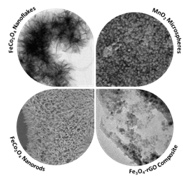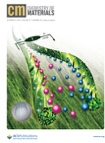Supercapacitors
 Supercapacitors are very high power electrochemical energy storage devices but with low energy density. We are working in the development of innovative electrode materials and electrolytes with the main aim of increasing the energy density of the devices by increasing their capacitance and/or their operating voltage. Moreover, we are very interested in the development of multifunctional devices such as transparent, flexible or structural devices with application in automotive, textile, composite industries.
Supercapacitors are very high power electrochemical energy storage devices but with low energy density. We are working in the development of innovative electrode materials and electrolytes with the main aim of increasing the energy density of the devices by increasing their capacitance and/or their operating voltage. Moreover, we are very interested in the development of multifunctional devices such as transparent, flexible or structural devices with application in automotive, textile, composite industries.
Our expertise includes; material synthesis and characterization, preparation of components, assembly of prototypes (Swagelok, coin and pouch cells) and electrochemical testing of the devices. Some of our main activities includes:

- Ionic Liquids;
- Polymer Electrolytes;
- Redox electrolytes;
- Sophisticated carbonaceous structures (CNT fibers, N-doped activated carbons, graphene)
- Metal mixed oxides and sulfides and their composites with graphene and other nanocarbons.
- Flexible/structural supercapacitors
Selected publications:
 Senokos, E., Reguero, V., Cabana, L., Palma, J., Marcilla, R., Vilatela, J.J. “Large-Area, All-Solid, and Flexible Electric Double Layer Capacitors Based on CNT Fiber Electrodes and Polymer Electrolytes”. Advanced Materials Technologies, 2017, 2 (7), art. no. 1600290. https://doi.org/10.1002/admt.201600290
Senokos, E., Reguero, V., Cabana, L., Palma, J., Marcilla, R., Vilatela, J.J. “Large-Area, All-Solid, and Flexible Electric Double Layer Capacitors Based on CNT Fiber Electrodes and Polymer Electrolytes”. Advanced Materials Technologies, 2017, 2 (7), art. no. 1600290. https://doi.org/10.1002/admt.201600290
 Navalpotro, P., Palma, J., Anderson, M., Marcilla, R. “High performance hybrid supercapacitors by using para-Benzoquinone ionic liquid redox electrolyte”. Journal of Power Sources, 2016, 306, pp. 711-717. https://doi.org/10.1016/j.jpowsour.2015.12.103
Navalpotro, P., Palma, J., Anderson, M., Marcilla, R. “High performance hybrid supercapacitors by using para-Benzoquinone ionic liquid redox electrolyte”. Journal of Power Sources, 2016, 306, pp. 711-717. https://doi.org/10.1016/j.jpowsour.2015.12.103
Sanchez, J.S., Pendashteh, A., Palma, J., Anderson, M., Marcilla, R. “Anchored Fe3O4 Nanoparticles on rGO Nanosheets as High-Power Negative Electrodes for Aqueous Batteries”. ChemElectroChem, 2017, 4 (6), pp. 1295-1305. https://doi.org/10.1002/celc.201700048
Vilatela, J.J., Marcilla, R. “Tough Electrodes: Carbon Nanotube Fibers as the Ultimate Current Collectors/Active Material for Energy Management Devices”. Chemistry of Materials, 2015, 27 (20), pp. 6901-6917. DOI: 10.1021/acs.chemmater.5b02783
Patents:
Multifunctional composite material, PCT/ES2018/070015 (10 January 2017). J. J. Vilatela, E. Senokos, J. Palma, R. Marcilla. Joint ownership with IMDEA Materials Institute
R&D Projects:
MATCAP - Innovative materials for application in advanced supercapacitors
The ultimate goal of MATCAP project is to achieve significant progress in the Supercapacitor technology by developing new electrode and electrolyte materials for electric double layer capacitor (EDLC), but also facilitating to tackle new concepts such as pseudocapacitors and "supercap-batteries". Specifically, this project addresses the following objectives:
- Development of innovative electrode materials with high capacitance values: carbons with controlled textural properties, conducting polymers, metal oxides, and their composites.
- Investigation of the structure-performance relationship using in-situ advanced characterization techniques.
iii. Development of EDLCs, pseudocapacitors and "supercap-batteries" with improved performance by utilization of advanced electrodes and electrolytes (aqueous, ionic liquid and polymer electrolytes) and by conceiving new device configurations by using composite materials and asymmetric designs.
DESMAN - Development of new structural materials for energy harvesting and storage
There is an ever increasing need to reduce the weight of aircraft structures to reduce fuel consumption and increase payload, which has resulted in a continuous effort to replace materials used in aircraft by lighter alternatives. The general objective of this project is to develop new structural materials that can harvest and store energy, thus reducing component weight and providing a degree of self-powering for some electronic devices inside the aircraft. This project aimed to develop an operative prototype of structural supercapacitors consisting of arrays of fibres used as electrodes and reinforcing elements, and a solid electrolyte as a matrix for load and charge transfer.


